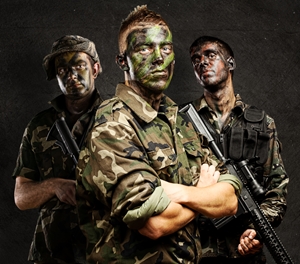The body armor and protection soldiers take into battle is constantly under scrutiny from research and development programs, and though it may seem like it is coming straight out of science fiction, the prototype of a powered exoskeleton soldiers may one day wear on the battlefield will begin preliminary testing this summer. While the futuristic armor has been compared to that worn by the superhero Iron Man, military officials are not ready to say it is capable of feats as fantastic as flight, but the technology may prompt a revolutionary change in infantry-based combat.
Suit up, soldier
DefenseTech.org reported on the announcement of the suit's planned testing program at the Special Operations and Low-Intensity Conflict conference in Washington, D.C. Navy Adm. William McRaven, the ranking officer of U.S. Special Operations Command, told the assembled media that if everything goes according to plan, the suit could be on testing grounds by June and in the hands of soldiers by August of this year.
"That suit, if done correctly, will yield a revolutionary improvement in survivability and capability for special operators," McRaven said. By combining integrated weapons systems and health monitoring capabilities, McRaven believes the powered exoskeleton will give the U.S. a "huge comparative advantage over our enemies and give our warriors the protection they need."
Technology and operability
The incredible functionality of the suit – dubbed the Tactical Assault Light Operator Suit, or TALOS – could promise a much greater degree of protection for soldiers from seen and unseen threats than current options. The Department of Defense reported that while the full extent of the suit's capabilities remains to be seen, integration of several defense and information systems could create the soldier of the future.
While body armor has been getting lighter and lighter, that progression can mean a sacrifice of strength. With the TALOS suit, soldiers can wear the heaviest, most protective armor available without worrying about fatigue – actuators in the suit would carry the weight instead of the soldier. An array of sensors and computers will collect data and information from the battlefield and present any relevant pieces to the wearer via a heads up display on the helmet's visor.
"The intent is to have this fully integrated system so you can provide the most capability at the lowest impact to the soldier," Michael Fieldson, SOCOM's TALOS project manager told the DOD. "We are really looking at stretching the bounds of science and technology."

